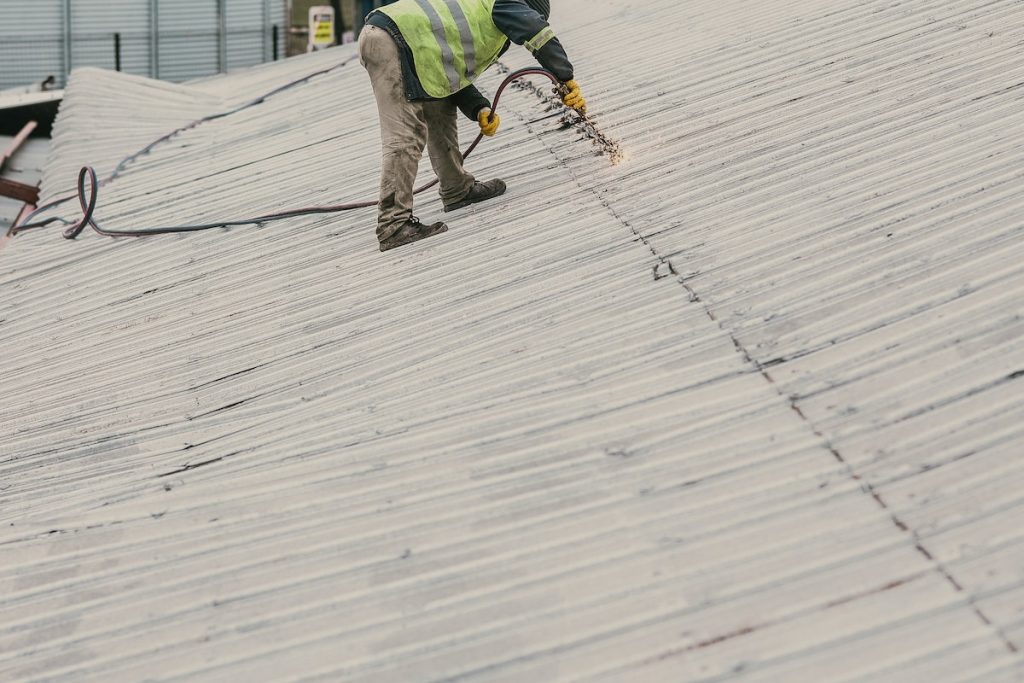- Thermal imaging technology can detect hot spots, weak areas, insulation levels, and mold.
- Infrared inspection uses a thermal imaging camera to detect temperature differences in the roof.
- Pressure immersion testing involves filling the roof with water and monitoring pressure levels to identify leaks.
- Moisture meters measure the moisture content of the roof to detect leaks.
- Drones can survey roofs and quickly identify moisture build-up and temperature changes.
Are you tired of dealing with constant roof leaks and water damage? While traditional inspection methods can be time-consuming and unreliable, technology is revolutionizing how you detect and repair roof leaks. This guide will explore five innovative ways to detect and repair roof leaks that can save you time and money in the long run.

1. Thermal Imaging Technology
If you want to detect leaks before they cause serious damage, thermal imaging technology is the way. This technology uses infrared cameras to detect temperature changes in the roof, which can indicate the presence of water or moisture. By using thermal imaging, you can identify leaks that would otherwise go unnoticed until they cause serious damage.
One way to use thermal imaging is to conduct an annual roof inspection using an infrared camera. This can help you detect leaks early on and proactively address them. Additionally, you can use thermal imaging during a roof repair project to ensure that all leaks have been properly addressed.
Here are other uses of thermal imaging technology for your roof:
Detecting Hot Spots
Thermal imaging technology can detect hot spots on your roof, indicating a possible fire hazard or other structural damage. By detecting these hot spots early on, you can address the issue before it becomes more serious.
Pinpointing Weak Areas
Thermal imaging is also useful for pinpointing weak areas on your roof where water may be seeping through the surface. This allows you to identify and repair any damaged areas before they become worse and cause further damage to the structure of your building.
Inspecting Insulation
Another use of thermal imaging is to inspect insulation levels in a home or business’s attic or crawl space area. This will help ensure that your insulation is in good condition and that energy efficiency is maintained.
Detecting Mold
Mold growth can happen quickly if moisture is present, but thermal imaging technology can help you detect it before it becomes a bigger issue. By detecting any mold early on, you can take the necessary steps to address the problem and keep your property safe from further damage caused by mold.
2. Infrared Inspection
Infrared inspection is another technology that can help you detect leaks quickly and accurately. This method involves using a thermal imaging camera to detect temperature differences in the roof, which can indicate the presence of water or moisture. Unlike traditional inspection methods, an infrared inspection can detect leaks even if hidden from view.
During an infrared inspection, the camera will detect temperature differences in the roof and visually represent the findings. From there, a professional can identify areas where leaks are present and take appropriate measures to repair them. This method is quick, accurate, and can help you save money on costly water damage repairs.
3. Pressure Immersion Testing
Pressure immersion testing is another innovative way to detect leaks in your roof. This method involves filling your roof with water and then monitoring the pressure levels to determine if there are any leaks. This can effectively identify leaks in hard-to-reach areas or those not visible to the naked eye.
During a pressure immersion test, a professional will fill your roof with water and monitor the pressure levels to determine leaks. If leaks are present, the professional can take appropriate measures to repair them. This quick and accurate method can help you identify leaks before they cause serious damage.
4. Moisture Meters
Moisture meters are another innovative tool that can help you detect leaks in your roof. These devices measure the moisture content of your roof and can help you identify areas where water is present. Moisture meters can be especially useful for detecting leaks in flat roofs or those with low slopes.
During a moisture meter test, a professional will use the device to measure the moisture content of your roof. Areas with high moisture content may indicate the presence of a leak, which can then be repaired. This method is quick, accurate, and can help you avoid costly water damage repairs.
5. Drones

Drones are an increasingly popular tool for detecting and repairing roof leaks. With the help of drones, inspectors can quickly survey a roof area to detect any potential leaks or moisture build-up. Drone technology also allows for quick repairs without having to access hard-to-reach areas.
Inspectors can use innovative roof leak inspection drones to survey a roof and quickly detect potential leaks. These drones have high-resolution cameras that can detect even the smallest moisture build-up. Additionally, they feature advanced sensors that can track temperature changes in the roof, allowing inspectors to identify areas affected by water damage. Once detected, repairs can be carried out quickly and safely without accessing hard-to-reach areas.
In Summary
If you’re tired of dealing with constant roof leaks and water damage, it’s time to consider innovative ways to detect and repair them. Whether you choose thermal imaging, infrared inspection, pressure immersion testing, moisture meters, or drones, these technologies can help you identify leaks quickly and accurately—saving you time, money, and peace of mind.
